Parents have enough to worry about when it comes to raising their children. Whether they are infants, adolescents or even adults, everyone desires good health and a long life for their children. Unfortunately, we cannot always predict or control the challenges our children may encounter. Nobody understands this more than parents of children born with congenital heart disease.
What are congenital heart defects?
According to the Center for Disease Control (CDC), congenital heart defects (CHD) are the most common types of birth defects, which damages the structure of the heart beginning in utero. CHDs are diagnosed in roughly 40,000 births each year in the United States. The good news is that babies born with these conditions are living longer and healthier lives with the right treatment and understanding of their disease.
The heart is divided into four hollow chambers; two chambers on the right and two on the left performing independent functions. During the first six weeks of pregnancy, the heart begins taking shape - beating in rhythm and forming major blood vessels. By nine weeks of pregnancy, heart chambers and valves have developed. It’s during this period of gestation that the heart structure may become damaged and defects occur.
While some congenital heart defects in children are simple and don't always mandate treatment, others are more complex and may require several surgeries performed over a period of several years. However, roughly 25 percent of babies have critical CHD and will need surgery in their first year of life and nearly all those with CHD will need lifelong monitoring.
Can congenital heart defects be diagnosed before birth?
During some pregnancies, physicians may order a fetal echocardiogram. A fetal echocardiogram is an ultrasound test, generally performed in the second trimester of pregnancy. A fetal echocardiogram helps obtained detailed assessment of baby’s heart structures and functions. This test enables your physician to detect heart abnormalities before your baby is born, allowing for planning appropriate medical or surgical care after birth.
What are the symptoms of congenital heart defects?
Serious congenital heart defects present soon after birth or during the first few months of life. Signs and symptoms could include:
- Pale gray or blue skin color (cyanosis)
- Heart murmur (abnormal sound when physician listen to heart with stethoscope)
- Rapid breathing
- Swelling in the legs, abdomen, or areas around the eyes
- Shortness of breath during feedings, leading to poor weight gain
The less serious congenital heart defects may not be diagnosed until much later, because signs and symptoms aren’t always recognizable or may be attributed to something else such as dehydration, fatigue, or being overweight. Older children who exhibit any of the following should be seen by a pediatrician who may then refer parents to a pediatric cardiologist.
- Becomes short of breath during exercise or another activity
- Tires easily during exercise or physical activity
- Faints during exercise or physical activity
- Experiences swelling in the hands, ankles, or feet (edema)
If your child is believed to have a CHD, a pediatric cardiologist will perform a physical examination and conduct several tests to determine next steps. These diagnostic assessments may include an electrocardiogram (EKG), echocardiogram, Holter monitor, treadmill test or stress echocardiogram.
Types of Congenital Heart Defects
While researchers cannot pinpoint exactly what causes proper development of the heart, there are risk factors believed to play a role. These factors include certain medications, maternal obesity, smoking, alcohol use, genetics, and environmental exposures. Still, it’s important for parents to know that nine times out of 10, it is not their fault. When CHD occurs, the most common fall into one of following several categories, although there are more than 35 identified defects.
- Holes in the heart may form within the walls between chambers or between major blood vessels, which results in too much blood flow to lung or sometimes insufficient oxygen being carried throughout the child’s body. Common holes in heart includes atrial septal defect (known as ASD) and ventricular septal defect (VSD).
- Obstructed blood flow occurs when blood vessels or heart valves are narrow. Common heart valve stenosis includes pulmonary or aortic valve stenosis. In this scenario, the heart must work harder to pump blood through them. Eventually, the heart can thicken and increase in size.
- Abnormal blood vessels running to and from the heart may be damaged or not in the correct positions. They maynarrow the pathway for proper blood supply, and connections between the lungs and heart may be incorrect.
- Heart valve abnormalities occur when the heart valves are unable to open and close correctly. When this happens, the blood doesn’t flow smoothly and may result in a leaky valve or abnormal blood flow to the lungs.
- An underdeveloped heart is just as it sounds. At times, a chief portion of the heart fails to develop properly. This affects the proper pumping of the heart and blood flow throughout the body.
- A combination of heart defects is an unfortunate circumstance where a patient is born with more than one heart defect. For example, a combination of four defects where there is a hole in the wall between the heart's ventricles, a narrowed passage between the right ventricle and pulmonary artery, a shift in the connection of the aorta to the heart, and thickened muscle in the right ventricle is known as Tetralogy of Fallot.
As annual well visits are important to maintaining overall health, it is equally important for anyone living with heart defects to see a cardiologist regularly. As children with CHD transition to adult health care, either upon entering college or living independently, it is imperative to notify new doctors about the CHD diagnosis and previous care. It’s also important for parents to promote an established relationship between their child and a healthcare provider indefinitely. Ongoing appropriate medical care for their specific heart defect will help children and adults with a CHD to live long, heathy lives.
A Lasting Relationship – Working with Your Child’s Provider through Adulthood
I perform fetal echocardiograms, see pediatric CHD patients and even follow patients with a congenital heart disease through adulthood. Many congenital heart conditions diagnosed at birth require ongoing monitoring; however, there are specific conditions that may cause complications that warrant additional treatment or surgery later in life. I work with my patients and their families about general health and lifestyle choices and discuss any foreseeable challenges to ensure they lead a productive life.
Of course, children and adults with CHDs play a role in their health care, too. It’s imperative they know their medical history, including their individual heart defect, procedures already performed at birth, current and past medications prescribed, and their current health status and any known treatment plans.
Exercise is something everyone can do with many options and it is an important part of staying healthy. The heart is a muscle, after all. Participating in organized or recreational sports is important to maintain a healthy weight and avoid diabetes, as well as reduce the chance of high blood pressure or high cholesterol. Physical activity also is a great stress reliever instead of adopting unhealthy habits later in life such as drinking alcohol, smoking, or mindless eating. Of course, anyone with CHD should discuss with their healthcare providers those activities best suited for them and if there are any that should be avoided.
Children who have heart defects will become adults who have a heart history. In order to avoid any complications or future problems such as heart tissue infection (endocarditis), heart failure, stroke, arrhythmias, or heart valve problems, the proper diagnosis, treatments, and medical management will determine their overall health years down the road. While complications associated with congenital heart defects are not a guarantee, they are a possibility and most children with congenital heart defects will need to be seen regularly by a cardiologist throughout their lifetime.
Those living with CHD have a bright future thanks to medical and surgical advances over the years. Still, there is no cure for CHD and vigilance is as important as that first diagnosis.
For information about our pediatric and adult cardiology services, contact the UPMC Heart and Vascular Institute at 717-731-0101 or visit us online.


















